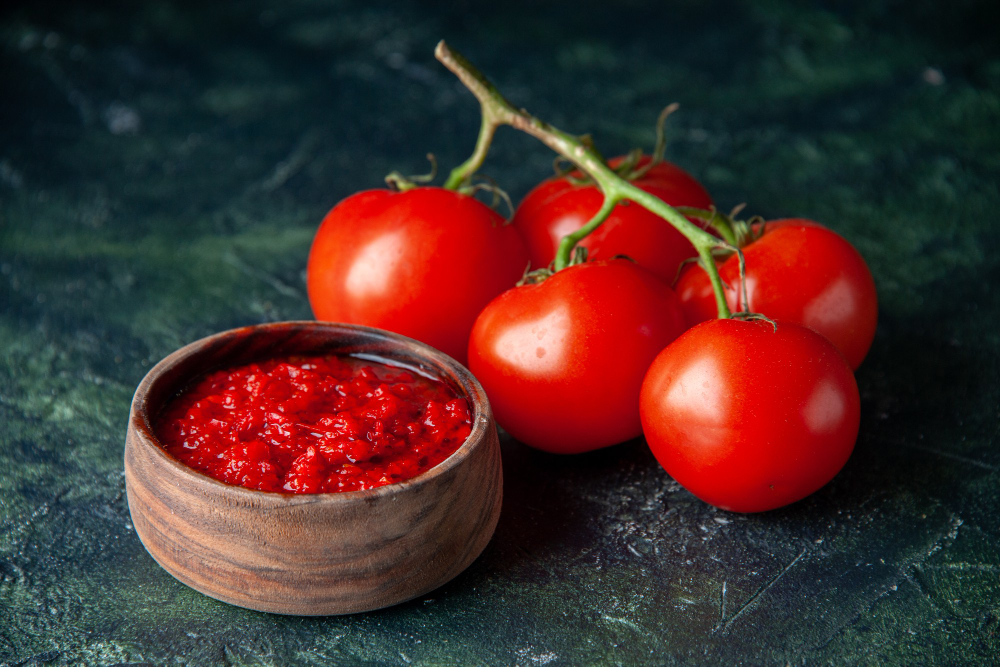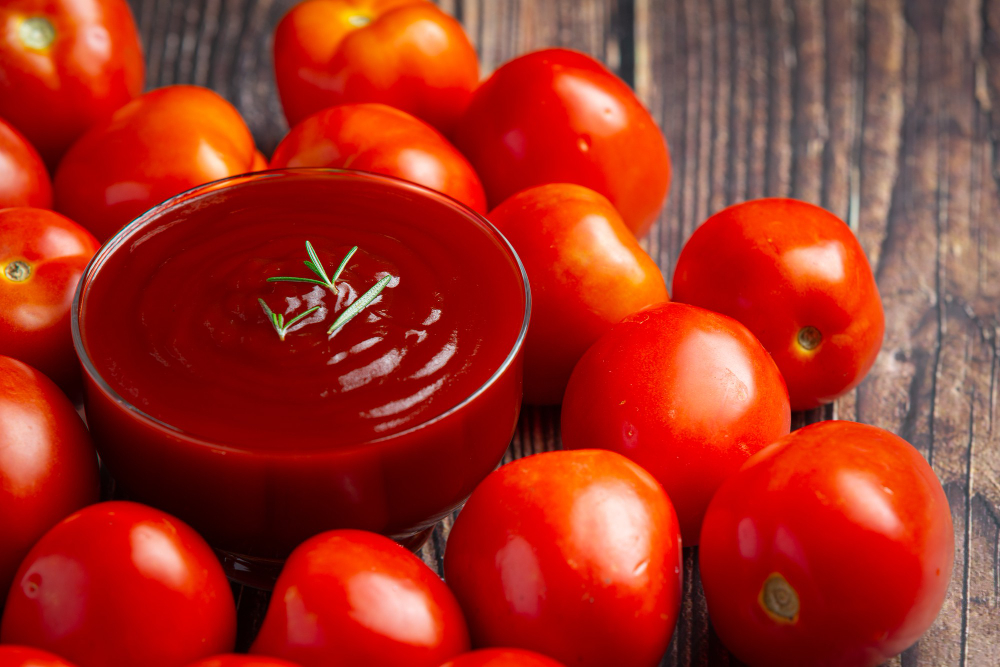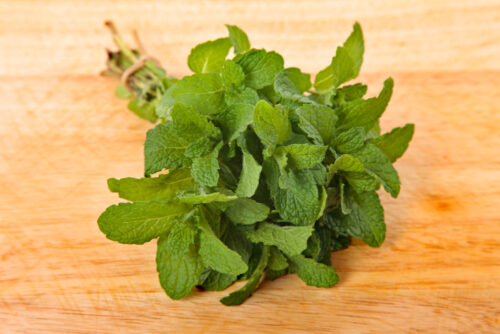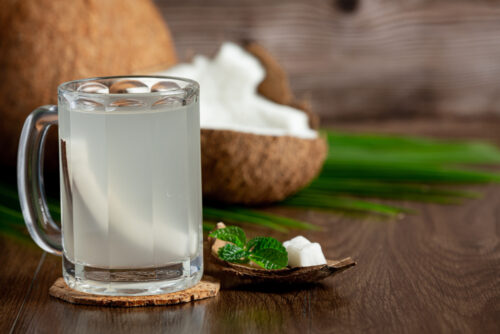Have you ever prepped for the perfect pizza and then realized you ran out of tomato sauce?
Well, I’m one of you. Oven preheated, mozzarella ready, chicken chunks seasoned, but when an empty jar of tomato sauce appears.
Panic Mood On.
But here’s a miracle: I used a solid substitute for tomato sauce, which rescued my Weekend night.
What’s the substitute?
Well, as a food writer and flavor explorer, I’ve tested everything from classic marinara to sweet ketchup. Today, I’m sharing my top 5 tomato sauce substitute picks, each one bold, tangy, and perfect for pizza nights.
Substitute For Tomato Sauce: What Else Can You Use?

Looking for a quick substitute for tomato sauce? Here are the top tomato-based picks that can save your pizza night:
Crushed or Canned Tomatoes
A classic tomato sauce substitute, simmer, season with herbs and salt, and adjust the thickness to your liking. Perfect for bold and fresh flavors.
Tomato Paste
Rich and dense, tomato paste can be diluted (1:1 ratio with water), like:
If you use one and a half cups of tomato paste, the same amount of water insertion is recommended for giving a touch of liquid.
While proceeding to the rest of the steps, season with garlic, basil, and a pinch of sugar to mimic traditional sauce.
Ketchup
It’s a famous and expected alternative to tomato sauce. However, to balance its sweetness. The splash of vinegar or Italian herbs works efficiently for a decent, quick fix.
Tomato Soup
Creamy and mildly sweet, tomato soup is softer, which can introduce a unique twist on pizza sauce. The tomato soup has a thinner texture, so be sure to use it in a lighter application or consider reducing it for a more consistent texture.
Can You Use Tomato Paste Instead of Tomato Sauce? Game-Changer or Flavor Fail Recipe?
Yes, you can use tomato paste instead of tomato sauce, but only if you do it right. Tomato paste is thick, rich, and Heavily textured.
To transform it into a tomato sauce substitute, mix it with water in a 1:1 ratio.
For example, a mini bowl of paste will require the same amount of water. In simple terms, put the paste in a pan and then, using the same bowl, add water. Here, this approach eliminates the exact measuring factor.
Finalize by seasoning with the addition of salt, garlic powder, a pinch of sugar, and Italian herbs to bring the flavor to life.
This tomato sauce substitute works great in pasta and even better in pizza for delivering a bold, rich tomato punch that screams ‘Mamma Mia!
Note: Remember, no seasoning, no magic. It can go from genius to “meh” fast if you skip.
What If You’re Out of Tomatoes or Allergic to Them?
For quick sauce creation, tomato paste is ideal, but sometimes you may want to go beyond, where tomatoes are not required, or you’re avoiding them due to allergies or dietary preferences.
No worries, there is a wide range of creative and tasty alternatives that can save your pizza night or pasta dinner.
Tomato-Free Options: Creative and Allergy-Friendly Alternatives
A wide range of people exist who have allergies and dietary issues related to the properties of tomatoes.
But people also crave its sweet and sour flavors. However, there are also flavorful options that are notable as allergy-friendly substitutes that bring a bold taste—without the tomatoes:
Roasted Veggie Bases:
- Use bell pepper, carrot, beet, or eggplant purées as the foundation for your sauce.
- Roast or steam until tender, then blend into a smooth purée.
Layer in Flavor:
- Boost umami with ingredients like nutritional yeast, miso, or mushrooms.
- Add acidity using vinegar or citrus juice.
- Spice it up with garlic, paprika, or Italian herbs.
Perfect For:
- Anyone with tomato allergies, acid reflux, or nightshade sensitivity.
- It’s also beneficial for those who enjoy creative cooking, and instead of tomato sauce, they want an alternative for an invention.
Quick DIY Pizza Sauce Recipes (Including Tomato-Free Options)
5-Minute: Tomato Paste Sauce
Short on time? Mix the tomato paste with equal parts water—next, season with garlic, herbs, and a pinch of sugar. Your meal’s bold and tangy partner is ready.
15–20 Minutes: Classic marinara
Make something more special while the movie is about to start in a few minutes.
Blend the tomatoes, then simmer them gently with garlic, basil, and olive oil to create a rich, comforting sauce—packed with flavor. This sauce doesn’t need to be summarized, as it makes every pizza and meal extra delicious.
20–25 Minutes: DIY Bell Pepper or Carrot Blend (Tomato-Free)
Are you allergic to tomatoes or can’t eat them because of health issues? You can roast bell peppers or carrots and blend them with spices and a splash of lemon for an energetic taste, a naturally sweet sauce, nightshade-free, and full of flavor.
Note:
Searching for a substitute for tomato sauce does not always result in delicious and flavorful food for everyone.
Taste buds are the main reason behind the lack of savor; finding other ingredients’ sauces is beneficial for taste discovery, and having a source that assists you is a great gratitude.
Source, like The Food Nom, is a dedicated platform that passionately provides an extensive range of food and its lesser-known substitutes, along with their pros and cons, as well as recipes, for its users, enabling them to experience the meal of their dreams.
So, do you wanna taste it too?
How to Store the Sauce to Keep It Fresh?
Whether it’s a quick tomato paste mix or a roasted carrot purée, storing properly keeps your masterpiece fresh for days—or even weeks.
Fridge vs Freezer: What Goes Where?
Fridge (Short-Term Storage):
Sauces made at home can last 3–5 days in the fridge if stored in airtight containers or jars to prevent spoilage and odor absorption.
Freezer (Long-Term Storage):
You can freeze the sauce if you have nothing to dip or want to save for several weeks.
Research suggests that most sauces can be stored in the freezer for up to 3 months. Just make sure they’re entirely cooled before freezing.
Labeling and Portioning Made Easy
Portion Smart Tactic:
Divide sauces into small, meal-size portions using silicone trays, muffin tins, or ziplock bags, like our mother did. This method helps you defrost only what you need.
Label Everything:
Always write the date and name on your containers. Tomato-free blends and spicy sauces can look similar once they are frozen!
Pro Tip:
Best Containers for Maximum Freshness
- Glass Jars with Lids: Ideal for both, from fridge for storage to oven for reheating.
- Silicone Ice Cube Trays: Perfect for freezing small portions.
- Freezer-Safe Bags: Ideal for flat storage, saving space, and thawing quickly.
- Airtight Plastic Containers: Convenient and stackable. Just make sure they’re BPA-free.
FAQ Section
1. Is Tomato Sauce Actually Healthy?
Tomato sauce is healthy, especially when prepared at home or produced in a health promise factory. It contains vitamins A and C and antioxidant lycopene. On the other hand, ready-to-eat commercial sauces often include high levels of sugar, sodium, and preservatives, making them less suitable for everyone.
2. How Do Unique Tomato Sauce Substitutes Compare Nutritionally?
The unique tomato substitutes, such as beet, carrot, or bell pepper mix, are naturally low in sodium and acidity, and they also provide naturally variable health benefits, including additional fiber or reduced sugar, making them even easier for the digestive food than tomato sauces.
3. Which Tomato Sauce Substitute Should I Pick and Why?
Your choice depends on your reason for avoiding tomatoes. If it’s due to allergies or acid reflux, veggie-based sauces made from carrots, beets, or bell peppers are smart picks. However, for a quick fix, mix tomato paste with water and season well. And if you’re craving variety, opt for non-tomato alternatives like pesto or herbed yogurt to explore new flavors.
4. How to Adjust Your Substitute for Tomato Sauce Recipe for Ideal Texture and Flavor?
Ensure to balance the thick or watery substitutes to adjust their texture. It is recommended to equalize the simmering crushed tomatoes and water in the same amount to achieve a balance of sweet, sour, and umami elements. This can be achieved by using ingredients like lemon juice, garlic, or miso to mimic the taste of tomatoes.
5. What’s the Difference Between Tomato Allergies and Intolerance?
A tomato allergy is an immune reaction that results in swelling or rashes, whereas intolerance causes digestive issues such as bloating or reflux. Nightshade sensitivity may also lead to discomfort, so it’s essential to understand your symptoms.
6. What Are Some Global and Regional Alternatives to Tomato Sauce?
On a global scale, there are numerous flavorful options. Try pesto, romesco, muhammara, or yogurt-herb sauces. These alternatives offer a unique experience, free from tomatoes, and provide both taste and cultural flair beyond basic substitutes.
Conclusion
In final words, running out of tomato sauce or skipping it for health reasons doesn’t mean that your pizza night is ruined.
It’s an opportunity to discover something new from the tradition. With the proper tomato sauce substitute, whether it’s tomato paste, a veggie blend, or a bold global alternative, you can still have and serve a rich and satisfying flavor
From allergy-friendly options to quick pantry swaps, these alternatives to tomato sauce prove one thing: you can change the whole game of pizza by simply using different sauces. Sounds impressive.
So next time you’re in a pinch, reach for a smart tomato sauce alternative and let the flavor win.











